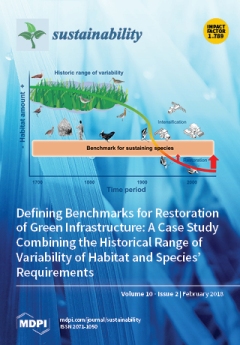View Item
- xmlui.general.dspace_homeCentros Regionales y EEAsCentro Regional Patagonia SurEEA Santa CruzArtículos científicosxmlui.ArtifactBrowser.ItemViewer.trail
- DSpace Home
- Centros Regionales y EEAs
- Centro Regional Patagonia Sur
- EEA Santa Cruz
- Artículos científicos
- View Item
Modelling soil carbon content in south Patagonia and evaluating changes according to climate, vegetation, desertification and grazing
Abstract
In Southern Patagonia, a long-term monitoring network has been established to assess
bio-indicators as an early warning of environmental changes due to climate change and human
activities. Soil organic carbon (SOC) content in rangelands provides a range of important ecosystem
services and supports the capacity of the land to sustain plant and animal productivity. The objectives
in this study were to model SOC (30 cm) stocks at a regional scale using
[ver mas...]
In Southern Patagonia, a long-term monitoring network has been established to assess
bio-indicators as an early warning of environmental changes due to climate change and human
activities. Soil organic carbon (SOC) content in rangelands provides a range of important ecosystem
services and supports the capacity of the land to sustain plant and animal productivity. The objectives
in this study were to model SOC (30 cm) stocks at a regional scale using climatic, topographic and
vegetation variables, and to establish a baseline that can be used as an indicator of rangeland condition.
For modelling, we used a stepwise multiple regression to identify variables that explain SOC variation
at the landscape scale. With the SOC model, we obtained a SOC map for the entire Santa Cruz
province, where the variables derived from the multiple linear regression models were integrated
into a geographic information system (GIS). SOC stock to 30 cm ranged from 1.38 to 32.63 kg C mð€€€2.
The fitted model explained 76.4% of SOC variation using as independent variables isothermality,
precipitation seasonality and vegetation cover expressed as a normalized difference vegetation index.
The SOC map discriminated in three categories (low, medium, high) determined patterns among
environmental and land use variables. For example, SOC decreased with desertification due to
erosion processes. The understanding and mapping of SOC in Patagonia contributes as a bridge
across main issues such as climate change, desertification and biodiversity conservation.
[Cerrar]

Author
Peri, Pablo Luis;
Rosas, Yamina Micaela;
Ladd, Brenton;
Toledo, Santiago;
Lasagno, Romina Gisele;
Martínez Pastur, Guillermo José;
Fuente
Sustainability 10 (2) : 438. (2018)
Date
2018
ISSN
2071-1050
Formato
pdf
Tipo de documento
artículo
Palabras Claves
Derechos de acceso
Abierto
 Excepto donde se diga explicitamente, este item se publica bajo la siguiente descripción: Creative Commons Attribution-NonCommercial-ShareAlike 2.5 Unported (CC BY-NC-SA 2.5)
Excepto donde se diga explicitamente, este item se publica bajo la siguiente descripción: Creative Commons Attribution-NonCommercial-ShareAlike 2.5 Unported (CC BY-NC-SA 2.5)


